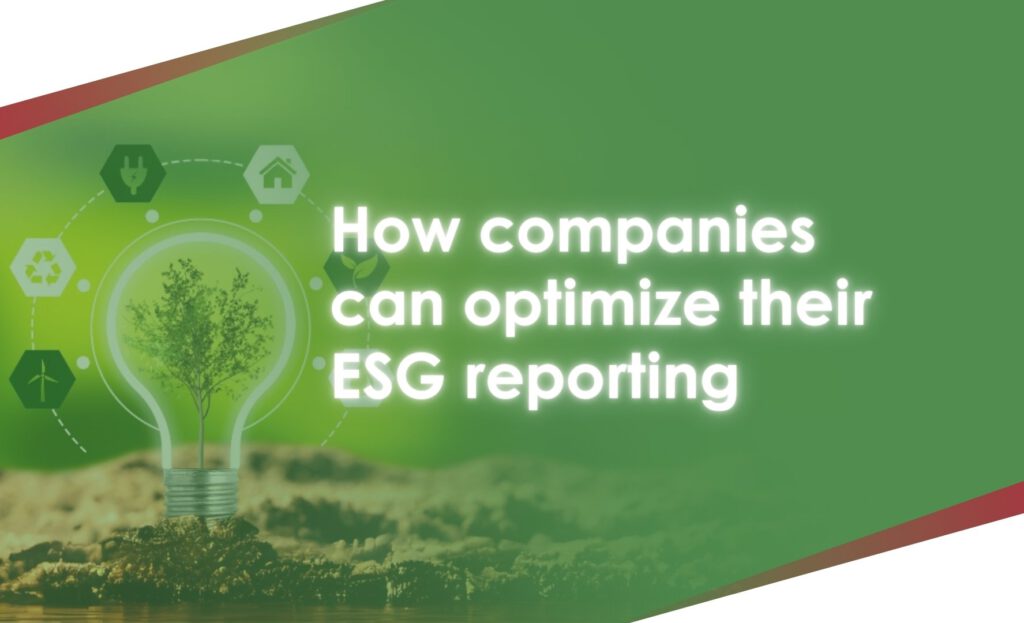1. What the analysis of 100 CSRD reports shows
The Corporate Sustainability Reporting Directive (CSRD) is changing the way companies have to report on their sustainability performance. A recent analysis of 100 CSRD reports, conducted by Victor Wagner, Maximilian A. Müller & Lea Hagemeier (source: Sustainability Reporting Navigator), shows clear trends and challenges. Companies are faced with the task of producing more comprehensive and data-driven reports – but the real question is: does this really lead to better reporting or just more paper?
Sustainability is more than just a reporting requirement – it is a key factor in long-term business success. ESG issues influence investor decisions, operational efficiency and public perception of companies. Those who use ESG strategically not only strengthen their own market position, but also make their company more resilient to future challenges.
We focus not only on collecting ESG data, but also on using it intelligently. With customized solutions that can be seamlessly integrated into existing systems, we help companies to design ESG processes efficiently. We attach particular importance to the fact that our solutions are open and flexible – so they can grow and continuously develop in line with our customers’ requirements.
Companies need to develop a clear strategy and efficient data infrastructure in order to make ESG data usable. Our analysis shows where the biggest pitfalls lie and how companies can optimize their ESG reports through intelligent data analysis, automation and business intelligence (BI).

2. The five most important findings from the analysis of 100 CSRD reports
2.1 Comprehensive reports – but is more really better?
Our analysis shows: Sustainability reports are now 47% longer and contain 68% more words than in the past. But more content does not automatically mean more clarity. Many companies are struggling with a flood of data instead of a clear data strategy – important information is unstructured or difficult to access.
Our solution for clear & efficient reports:
- Avoid data chaos – focus on relevant ESG metrics instead of endless detailed reports.
- Automation & AI-powered analytics – Seamlessly merge and efficiently manage ESG data.
- CSRD-compliant dashboards & reports – Less effort, more precision.
- Flexibility & integration – Adaptable to existing company processes.
Conclusion: We make ESG reporting lean, efficient & strategically usable – not a data graveyard, but a competitive advantage.
2.2 ESG issues are growing – but transparency remains a problem
Three main topics dominate ESG reporting: climate change (E1), employees (S1) & governance (G1). However, many reports are difficult to compare, unstructured and full of manual processes
Our smart approach:
- Automated ESG processes – reduction of manual errors, higher data quality.
- AI-supported ESG analyses – structure & comparability for better decisions.
- Scenario analyses & data forecasts – manage ESG strategies proactively, not just retrospectively.
Result: Companies save time, costs and improve their ESG transparency in the long term.
2.3 Companies with inadequate ESG reporting – efficiency booster through IBM TM1
Companies that had previously hardly published any ESG data had to increase the scope of their reporting by 258% – a huge challenge. A lack of data structures, unclear processes and manual errors often lead to inefficient, overloaded reports that offer no real added value for companies or stakeholders.
This is where IBM TM1 for ESG reporting comes in:
- Central data platform – All ESG data is seamlessly integrated from different sources and managed centrally instead of being processed manually in Excel or isolated systems.
- Dynamic dashboards & automation – Companies can generate CSRD and ESRS-compliant reports with just a few clicks instead of creating time-consuming manual evaluations.
- Real-time data analysis – With forward-looking scenario analysis and data forecasting, TM1 helps to plan future ESG developments – instead of just reporting retrospectively.
- Flexibility & scalability – TM1 grows with the company’s requirements and can be integrated into existing ERP, BI and financial systems.
The result: companies significantly reduce the effort involved in ESG reporting, improve data quality and transform their sustainability strategy from a purely mandatory task into a competitive advantage.
2.4 Companies with established ESG reporting benefit
Companies that had already published independent sustainability reports in 2023 had to make significantly fewer improvements in 2024. The key? A sustainable ESG data strategy right from the start.
Our strategic benefit:
- Early ESG concepts – no hectic retrofitting, but forward-looking planning.
- Structured ESG architecture – optimize data quality right from the start.
Conclusion: Those who use ESG data strategically are one step ahead in regulatory and operational terms.
2.5 Standardization is increasing – but reports are becoming more complex & negative
The increasing standardization through CSRD and ESRS is intended to make ESG reports more transparent and comparable. However, the analysis shows that it often leads to more complexity. Many reports are technical, full of jargon and tables that are difficult to understand, making them inaccessible to non-specialist readers. Instead of conveying strategic sustainability goals, risk analyses, liability issues and regulatory obligations dominate, making the reports increasingly negative and perceived primarily as compliance documents.
This deters investors, customers and other stakeholders. Instead of using ESG as a strategic positioning tool, many companies are losing the opportunity to highlight their innovative strength and market opportunities.
Our solution for strong ESG communication:
- Clarity instead of complexity – target group-oriented reports that are not only CSRD-compliant but also reader-friendly.
- Storytelling & visual presentation – Present ESG figures in a way that arouses interest and has an impact.
- More than just compliance – positioning companies as sustainable, future-oriented players, not just rule-followers.
Insight: ESG reports must not only fulfill legal requirements, but also convince the target groups. We help companies to use standardization as an opportunity – for transparent, effective and strategic ESG communication.
3. How we support companies with openness, flexibility and intelligent technology
- ESG Data Structuring & Automated Reports with IBM TM1
We use IBM TM1 as a powerful BI solution to seamlessly integrate and efficiently manage ESG data from various sources. Through AI-supported ESG data analysis and business intelligence (BI), we eliminate unstructured “black box” data and create a transparent, standardized basis for automated ESG reports at the push of a button – audit-proof, customizable and CSRD-compliant.
- Optimization & simplification of ESG reporting through intelligent automation
With our BI and AI expertise, we specifically identify data gaps and superfluous report content to reduce data overload while increasing data quality. By intelligently linking ESG metrics in IBM TM1, we avoid duplication and inefficient reporting structures, enabling companies to create lean, accurate and strategically relevant reports.
- Sustainability reports with impact – AI-supported ESG communication & marketing
ESG reports must be more than just mandatory documents. With AI-supported storytelling, automated data visualization and strategic ESG communication, we ensure that sustainability reports are not only understandable but also effective. At the same time, we help companies to sharpen their ESG positioning and establish themselves as pioneers in the field of sustainability through data-driven thought leadership.

4. CSRD reporting in transition: How we are helping companies achieve more efficient ESG reporting with BI, AI and IBM TM1
The analysis of the first 100 CSRD reports shows a clear trend: reports are becoming longer, more complex and more difficult to understand, while standardization often leads to technical overload. Companies with little ESG reporting experience in particular have had to drastically increase the scope of their reports – by up to 258%. At the same time, regulatory requirements dominate reporting, making many ESG reports more of a compulsory exercise than a strategic management tool.
This is exactly where we come in. With our expertise in business intelligence (BI), artificial intelligence (AI) and IBM TM1, we enable companies to provide structured, automated and targeted ESG reporting. By intelligently linking and automating ESG data, we reduce complexity, eliminate data gaps and avoid inefficient reporting structures. At the same time, we rely on storytelling and visual presentation to make ESG reports not only compliant, but also understandable, strategically valuable and competitively relevant.
With us, ESG reporting becomes a real benefit – efficient, precise and future-oriented.







